Andrey Gorokhov
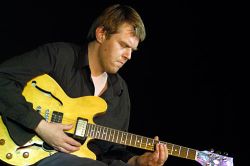 |
| Photo: Klaus Muempfer © 2002 |
The French guitarist-improvisor Noel Akchote is a frighteningly competent and active person. He has recorded a lot of music in various styles, he writes about music in the Austrian magazine Skug, he is the owner of a record label, he produces many different groups and participates in various projects. He writes scripts and plans to shoot movies.
When we negotiated our interview, Noel sent me, as a resume, a list of musicians with whom he had played… names of jazz classics, famous improvisors, well-known electronic musicians, dozens of names unfamiliar to me: the list just faded over the horizon. Honestly, I didn’t know what to do with this list.
“Why did I make this list? I hate lists and never kept any archives. I don’t collect articles or reviews. Of course, I have an archive of my records, but it’s a part of the working process. People always ask for lists of all people I used to play with, as though it has some sacred meaning. I think that a couple of short phrases will be enough for my biography – year of birth and the musical instrument: born in Paris, played the guitar. As for the list you have, someone made it up and sent it to me, and I just mail it around. What I’m interested in is what name from this list will be mentioned by a journalist in his article”
Noel Akchote started playing the guitar when he was eight. He grew up in an atmosphere of classical jazz: he not only went to concerts and festivals, not only was personally acquainted with almost all stars, but also played with many of them, say, with trumpet player Chet Baker or drummer Kenny Clarke.
Noel assured me that he managed to meet living classics and giants: in the end of the 70’s it was possible, because many of them lived in France or used to go to France to summer festivals, for example, in Nice.
The atmosphere was open and festal, and Noel’s father was an insider of the jazz scene, so the young guitarist could virtually touch his heroes and, well, play with them.
“Jazz was the only music that existed for me. To play music for me was to play jazz. But very soon I realized that I couldn’t play jazz as well as American jazzmen. It was obvious that it wasn’t my music; it was their music, so I had to do something of my own: not to fall into the cliche, not to answer expectations, but to find my own place. Properly speaking, my story can be called a story of disappointments in jazz. I discovered improvised music for myself”.
Does it have anything to do with jazz?
It rather has something to do with unwillingness to play cliched music and to desire to be unpredictable. As for jazz… I know how to play jazz; I know how to play jazz so that the people who want it from me will be satisfied. I wanted to play jazz without playing it.
I don’t believe in progress in music. I think that music speaks one and the same things, constantly coming back to the same things, but speaking them differently. Say, Missy Elliot obviously has roots of old blues singer Bessie Smith: Missy Elliot is doing the same as Bessie Smith, but doing it in an absolutely different stylistic manner. This is always the case. You can’t get away from your tradition”.
Really? There is a well-known contraposition of improvisation and composition. As I understand, the meaning of improvisation is that it radically breaks with the closed song structure…
“What’s the meaning of music? The meaning of music is in swing, in a song. Do you know what swing is? There’s no music without swing”.
I protested: “swing is acoustic plastics, music plasticity, its fluidity, and a song is a sequence of couplets and refrains, built around a catching melody. These are different things!”
Noel smiled: “It is much simpler. A song is what is sung in a shower-room or kitchen, this is what you want to sing. If music has swing in it, you want to sing it”.
He locked his arms as though embracing a guitar, moved his right hand shortly down the absent strings, bowed his head and drew his face – all in one movement. And then demagnetized in a tick and turned in an attentive interlocutor: “Swing is a moment of your physical presence in music, this is corporality, perceptibility of music, how you feel it with your body. A Guitar is a wooden box, and you are biting into it, you are trying to tear it apart, you are rocking it, you are singing into it”.
I couldn’t talk much about the essence of improvisation with Noel Akchote. It’s hard to speak about advantages and virtues of improvised music with a person, who admires songs of Julio Iglesias, because they are free from cliches, and thinks that improvised music has a lot of them.
“If you think that improvisation is a funny sequence of unusual sounds… – Noel made a wry face and moved his fingers, smacked this lips, dwelling on a couple of notes and suddenly cutting them off, – You are very wrong. Canons of so-called improvised music were formed long ago. It is well known what to do to make music look like an improvisation. But there’s no freedom in it. I can produce such sounds too. The fully predictable nature of what we usually call improvised music is getting more obvious, when you take a little side step. I see right away that improvised music moves by like large hills – the sound grows slowly, its density increases, then everything is slowly dispersed and calms down. Then another slow ascension begins”.
Well, let’s put in other words. When you are improvising, what do you do?
“I intercommunicate. Improvisation is not a monologue; it’s not a situation, when partners speak past each other. In any case, it’s not a situation, where you have pocketful of skillful arguments, gags and reserve topics you can jump to, prepared in advance. Improvisation is the physical presence of the whole man here and now. Improvisation is readiness to take risks; it is consent to risk. There is no risk in weird and allegedly unpredictable sounds. There is no risk in what is known or what is planned.
Do you know what improvisation looks like? What communication looks like?
My wife’s father is a Pole, he lives in Poland. We do not speak any language we can talk in common. Once we were sitting under an apple-tree for a couple of hours. If it was real communication; we were not bored, we didn’t keep silent because we had nothing to talk about. We were free and open. We were united by common experience, which was complete and meaningful”.
I attempted to talk about risk and unpredictability.
Noel Akchote told me the following story: he had always been incredulous and contemptuous of rock-guitarists and electric guitars used in rock in general. Just a couple days ago, for want of something better to do, he took in his hands a metal guitar.
He was astonished with its massiveness and weight, not so much with the massiveness of its sound as with its impenetrability. It suggests a very specific way of treatment; otherwise everything looks awful and unjustified. It’s like you walk in a heavy and strangely sewn suit, not intended to be walked in.
“And I thought that I would buy it and try playing, take a risk, treat it like a material object, enter into its vision of the world, encapsulated in it”.
Why not try playing oriental string instruments?
“No, it won’t work. A rock guitar is our culture, our tradition. One of my friends wanted to play the oud – it was terrible. The result was miserable and funny. We have nothing to do with Arabic or Chinese traditions”.
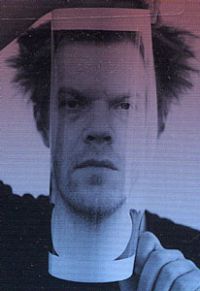 |
My conversation with Noel Akchote drifted from subject to subject, but I had a haunting feeling that I didn’t quite understand what he meant by very simple words, which emerged in our conversation all the time – risk, pop music, improvisation, cliche.
Stigmatizing cliches, Noel at the same time admired Julio Iglesias. It was beyond me.
“I don’t think that Julio is a cliche.
Cliche is Bjork. She is a cliche of herself; she has become a parody on herself. She is equal to expectations, which are just the same cliches. She made one superb album and then started reproduces cliches of herself, though nobody asked her to do it. Julio Iglesias is not a cliche. He’s not a composer, he’s a singer. He’s a functionary. He is very good at what he’s doing, at how he’s functioning. He makes pop music for women. Probably I say so, because I also was involved in dance music… Julio is amazing, everything is flying around him, he is turning everybody on. The way he sings, how he is involved in it is just fantastic.
I understand what you mean when you call him a cliche. But this is what people who do not listen to him say. Or the German hit singer Haino, that very guy in black sunglasses. He always sings only two songs: “How I Love You” and “How Beautiful Is My Homeland”. But the way he’s doing it, no one else would do”.
We discussed problems of German hits and French chansons. Noel started about Vladimir Vysotsky, who had become a cliche in perception of French leftist intellectuals.
As far as I understood, when talking about cliches, he meant not only music, but the entire picture, into which the musician is put by the public or, in a wider sense, by our society. This picture is always tendentious and fantastic; it is based on one-dimensional and unjustified ideas of how music is arranged, how and why a man is occupied with music. As a result, the musician is introduced in a kind of theatrical performance, in some plot, where he has to play a certain role, fobbed off on him or selected by him. Since his role remains unchanged from year to year, his music remains the same; it also plays a role – music represents some music. This moment of permanent representation by music of what it is not, constant simulation of some musical appearance is called a cliche.
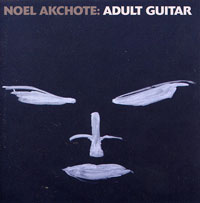 |
Noel Akchote “Adult Guitar” (Blue Chopsticks, 2004)
I unexpectedly found a familiar word, “cliche”, in the booklet to Noel Akchote’s CD “Adult Guitar” – “an adult guitar” or “a guitar for adults”. The album includes records of the last 20 years, but most of them – from the last ten years (FROM THE LAST TEN YEARS). These are fragments of Noel Akchote’s archive, demos, improvisations and live concerts, all that had been kept for internal use or for just-in-case. The album contains just a small portion of the archive; its length is 10 hours. This CD is called an album in the conventional sense: separate compositions are very different and do not fit together well.
In the CD booklet, guitarist Davis Grabbs tells the following story. Noel Akchote and his wife Magda watched a movie about Tarzan on TV. There was a scene, when Tarzan fights a big wild cat, a cheetah or a leopard. This fight looked like dabbling in the mud with a stuffed dummy, those that are sold at fairs. Noel said that it doesn’t matter how trivial or unconvincing this scene looks now; it doesn’t matter in how many movies scenes of fighting with a tiger, stuffed with cotton and straw, were shown. Who was the first to do it, and what he learnt in the process of movie making is important.
When film director W.S. van Dyke asked Johnny Weissmuller, a former Olympic champion, to act as though he’s attacked by a tiger, van Dyke had to invent his own movie, his own vision of what is happening. Today it is a trivial and obvious trick, but one day someone had to invent, arrange and assemble it. And it probably looked very strange.
“This is what I got from listening to such guitarists as Django Reinhardt or Charlie Christian. Or Eddie Durham. Or Freddie Green… (a long list of guitar players followed)… or Sonny Sharrock, or Derek Bailey.
Each of them invented his own style. It doesn’t matter how many people mastered technique, similar to Django Reinhardt: precise, note-by-note reproduction does not bring us closer to the time, situation or climate, when Django’s style was fresh, changing and provoking”.
The story about Tarzan undermines all the myths, innovators surrounded with.
Noel Akchote once said in his lecture about music, that the improvisors he respects most of all allowed themselves usual, habitual, uncontrolled, almost unconscious gestures.
“The meaning of improvisation is in letting yourself loose, in setting yourself free, in unconscious filling of provided space”.
It is possible to try and look at Noel Akchote from an external point of view, casting an eye on some of his projects and albums.
We’ll just manage to draw a vague definition between some of his records. We cannot be sure how typical and indicative they are for the musician.
Noel Akchote played quite traditional jazz, participated in the French movement of so-called “imaginary (or daydreaming) folklore”; I mean a group of musicians, flocked around saxophonist Louis Sclavis.
Noel had a band called MAO, which played, according to him, thrash-core based on Mao Zedong texts.
Noel Akchote played a lot of improvised music, music which irrationally jumped from side to side.
He has a lot of records with a heavy and plangent boom, electrical acoustic music. There is an album with music, which plays in Paris brothels.
It is impossible to cover this spreading tower of Babel with one look. Persistent unwillingness of the musician to choose and start doing something definite led to his rejection by the Paris musical community, and he moved to Vienna.
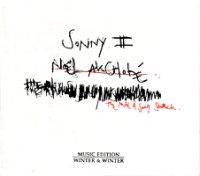 |
Noel Akchote “Sonny 2” (Winter & Winter)
Munich label Winter & Winter.
The album is dedicated to the American blues guitarist Sony Sharrock. Noel played Sharrock’s pieces and his own old-styled music.
As far as I understood from Noel, Sonny Sharrock is path breaker for him. Most of what Sonny played; he played without knowing how to play it correctly.
It looks like he was in a situation where no “correct” existed. So it is impossible to say that Sonny Sharrock makes mistakes: Sonny breaks through music, he roughly and immediately creates a musical event, building music matter. The guitar becomes an expedient tool: the way the guitarist’s hands are moving back and forth, how naturally his fingers slip off, how he, not knowing how to make a passage, imitates it with some hum strum – all this is vitally important.
The musician does not create some acoustic effect, but it is physically present inside his instrument. This is a very concrete, tangible matter.
Noel Akchote listened to all Sonny Sharrock’s music he could find, including bootlegs. Day by day he played one and the same phrase, trying to guess how Sonny Sharrock could come to this and what other possibilities this phrase hides.
It seems to me, that such attitude to musical tissue is similar with attitude of Andrey Platonov toward the word. Remember? “He was fired because of increased meditativeness among the growing total performance rate”.
By the way, the CD cover design includes pictures of cheerless American back country of the 1930’s, i.e. the time and environment not at all strange for characters of “Chevengur”.
I wouldn’t say that music is crazy, but it’s quite weird; it is somewhat sincere and simple with all its complicacy and distortion.
It is free of artfulness, and Akchote’s virtuosity is free of luster and glamour.
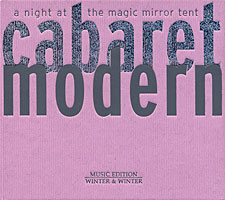 |
“Cabaret Modern” (Winter & Winter)
This is like a concert in a cabaret. The door bangs, voices and clink-clank of glasses are heard, chamber atmosphere, muffed light and sound. Guitar, bass, slight drums, accordion, piano and voices of singers.
All voices are very adult and every time strange and weird, not quite musical, not clean. It is obvious, that these people are weird, their performance is full of some theatrics and mannerisms. But it’s difficult to get rid of a thought that this is what they really are. There are very few of them on earth.
There are many songs in this album: songs in German, Italian, French, English. Hits, chansons, Serge Ginsburg, Tom Waits, Velvet Underground and even Kraftwerk.
Jazz critics compare this album to a flea market, meaning that everything is pretty amateurish and cozily sloppy.
Of course, it’s a good comparison, but the idea of the flea market is not that it’s an exhibition of objects to be thrown away.
No, at a flea market we see, first of all, pieces of the real live of real people. A feeling that a living person stands behind this screwdriver, plate or vinyl disc is very strong, because this person stands just before you. He shows himself from inside, giving you almost for free something he used to cherish. All items on his table are related to each other; they are united by life of the person, who sells them now.
In this sense, “Cabaret Modern” of Noel Akchote resembles a flea market. One can find a lot of things there; the place is full of little centers of attraction.
 |
I asked Noel why he had recorded such album. Was it a commercial project? He was very surprised with my question, meaning that the most commercial thing for him is to play jazz. This project has nothing to do with postmodernism, playing with various styles, retro or nostalgia, or kitsch reevaluation.
“This is a movie, – said Noel. – These are people. Everything is built up around her, around how she sings and who she is. When she sings, the world disappears.
She is an unknown Italian, Giovanna Cacciola. She sings only two songs and provides the backing vocals on two other.
And it becomes obvious, that what happens has nothing to do with stylization of club pastime of the 1930’s. It’s possible to say, that Giovanna is extremely intense, even existential; she turns her soul inside out… But I’d rather say that she’s a real person.
Giovanna, stamping her foot in the pause, sings a short partisan song “Bella Ciao” (Bye, Beauty).
Probably, the lesson of the “Cabaret Modern” album is that intensity, realness, excruciation and attrition are not and should not be in one style, at one and the same level of tension.
One song from this album reminds me more and more of a secret meeting of people standing apart from the rest of the world, “I Killed Love”. It was composed by pianist Jean-Louis Costes. He is French, but sings it in German.
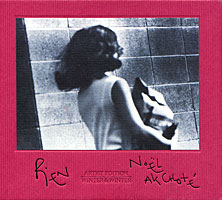 |
Noel Akchote “Rien” (Winter & Winter)
“Rien” means “nothing”. It is also a movie. Music can be perceived as a soundtrack to a movie, but in fact it was meant that music itself is a movie.
The movie is about a travel, motion in space and time, connection of points, strokes and landscapes in one line.
Noel Akchote plays the guitar, Eric Minkkinen works with computers, Andrew Sharpley operates a sampler and a turntable.
Music is a heavy vibrating booming with inclusion of metal guitar sounds. Very little is happening; we hear – or literally see – flaming aurora and peaks of some events, indistinguishable in the fog.
The massive background is distorted, short nervous sound strokes and points are not hanging down like decorative bijouterie; no, the body of music shudders, unfolds, turns around and is always moving back.
Maybe it looks like a glance through the window of a running night train. What do you see? You see nothing – raindrops before your nose and rare lights, which fail to build any coherent landscape.
When I asked him why he plays noise, Noel smiled: “I don’t play noise. I play swing”.
Noel told me, that he started using buzzing devices at the very end of the 90’s, not wanting to have anything to do with jazz, putting a period to a long history of his relations with jazz.
To his surprise, the reaction to “Rien” was very positive, and, weirdly enough, the album was appreciated by people, who had nothing to do with ambient or industrial music. Listeners had their own visions, their own recollections. What pictures he saw, the musician refused to say, meaning it was nobody’s business.
I understood, that if there is swing, if music incites the musician to have infusive and spontaneous attitude, the same attitude is incited among listeners. And what about pictures? Pictures are different every time.
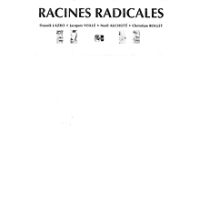 |
Racine Radicales (LP, Rectangle, 1996)
Noel Akchote is a co-owner of Rectangle label (together with Quentin Rollet). On the one hand, the label releases improvised music, that is to say nervous, fluid and unexpected; on the other hand, buzzing and humming. Racine Radicales includes a saxophone, trombone, guitar and drums.
Noel’s guitar often plays just a bass riff, merging with the trombone, but from time to time this is overlooked. You can imagine a much intertwined root system, where everyone is leaning against everyone, but there’s no fundamental and deep-running root.
Short pieces, played with extreme grace, one of them lasting fair 45 seconds. Thick vinyl. The entire release is sold out.
Melomaniac’s heart is restless.
 |
Derek Bailey – Noel Akchote
“Close To Kitchen” (Rectangle, 1996)
Two guitar players.
Broken, fragmentary music, not recognizing itself and not knowing where it would rush to the next moment.
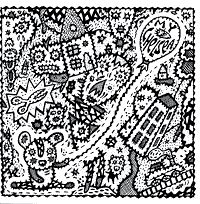 |
Phil Minton – Lol Coxhill – Noel Akchote
“My Chelsea” (Rectangle, 1997)
Voice, saxophone, guitar.
Saxophone here is the most human and traditional source of music.
Around it – just fine coating of sounds of unknown origin. It is not a guitar playing (and, of course, this is not singing: Phil Minton mainly groans, creaks and hoots).
The art of filigreed tomfoolery.
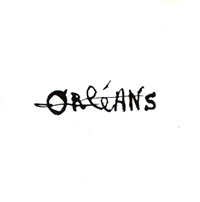 |
Orleans (Rectangle)
Free (but slightly old-fashioned) jazz.
Intense, but not complicated. Clean forms and laconism can hardly be found in modern jazz.
It’s a short album: four pieces, performed by four different duos. Each duo consists of a saxophone and contrabass players.
Noel Akchote is not playing here – he was a producer.
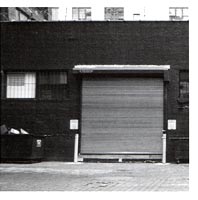 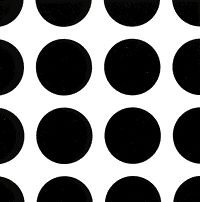  |
Noel Akchote
“Alike Joseph” (Rectangle, 1999)
“Simple Joseph” (Rectangle, 2001)
“Perpetual Joseph” (Rectangle, 2001)
“Joseph” is a trilogy by Noel Akchote.
Low-profile, barely modulated electronic noise.
“Alike Joseph”, at first sight, seems the most intense and persistent album out of the three. It is very good. One of my favorite humming releases.
Noel didn’t want to talk about music, meaning it is too intimate.
But then he mentioned that his project signified his breakup with jazz. He quit playing the guitar and didn’t want even to touch it.
That is why this music is made as if the guitar is treated as an erotic object you can’t touch.
Why Joseph?
Noel explained that Joseph was Maria’s husband, but never touched her.
January 2005
(The material is kindly given by a site http://muzprosvet.ru)
Andrey Gorokhov © 2000-2003 German Wave
Leave a Reply